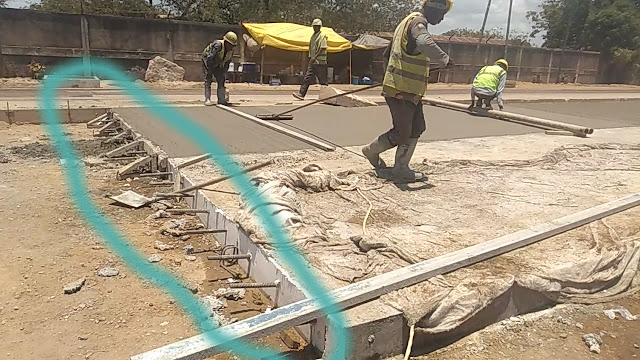JOINTS IN CONCRETE STRUCTURES
INTRODUCTION
In nowadays, reinforced concrete is the most popular
construction material, we have larger
reinforced concrete structures spanning over a larger area such as Dams,
retaining walls, rigid pavements, concrete channels and buildings; their
construction methods involves the use of different kinds of joints so they can
function effectively over its designed life.
Concrete joints, these are discontinuities that are
made within concrete structures or between consecutive concrete structures or
structural members so as to allow horizontal movement.
THE NEED OF JOINTS
Concrete material has one great weakness that is its
low tensile capacity, due to its weakness concrete is subjected to cracking
where by some of them are unavoidable, so crack control in reinforced concrete
structures is needed for two reasons.
1. Aesthetic
of concrete structure
Structures such as building their aesthetic value is
the one of the important aspect during its design and construction, cracks formed
on major framing elements such as columns and walls leads to rise of questions
on structural adequacy of structure.
The formed cracks may have affection to structural
performance of structure or not, but people with no knowledge concerning
structural design will only think that the building is inadequate for use.
2. Air
and moisture ingress
When cracks are formed on concrete surfaces with
substantial width invites the ingress of air and water into framework of the
structure which have deleterious effects to the structure.
TYPES OF JOINTS
During construction of larger reinforced concrete
different types of joints are provided at adequate spacing and locations; so as
to make structure function as intended, the following are most popular types of
joints which can be seen in different structures.
1. Construction
Joint
With exception to very small concrete structure, it is
impractical to cast concrete continuously on consecutive concrete panels or
masses, construction joint is required for sequential placement of concrete during construction.
These are provided when a new section of concrete is
poured adjacent to another concrete section that has already set; the purpose
of a construction joint is to allow some horizontal displacements that are
caused by thermal and shrinkage, while against rotational and vertical
movement.
Characteristics
of good construction joint
a). Provide a water tight surface which does not allow
ingress of water through the joint.
b). Allows for flexural and shear continuity through
the joint (without continuity weak region result).
2. Expansion
Joint
In our environment always temperature changes with
time and seasons, changes in temperature lead to volume changes of different
materials with accordance to their coefficient of expansivity.
Volume change of concrete induces stresses in
reinforced concrete structures that are restrained, no stresses are developed
in unrestrained structure, and the induced stresses vary with the magnitude of
temperature change.
Larger temperature change can result to substantial
stresses that must be counted for in design, while low temperature changes may
result in negligible stress.
Characteristics
of good expansion joint
a). Should be wider enough to prevent two potions at
joint to come in contact, when they subjected to expected maximum temperature.
b). Should permit expansion and contraction of two
separate segments of concrete structure without affecting structure integrity
and serviceability.
3. Contraction
Joint
Drying, shrinkage and contraction (due to decrease in
temperature) induces tensile stresses in restrained concrete structure, crack
will be formed when tensile capacity of concrete is exceeded.
A contraction joint is the sawed or tooled groove in a
concrete slab that creates a weakened region; the weakened region is created by
reducing concrete cross sectional area
and reinforcements.
The concrete cross section should be reduced to a
minimum of 25%, to ensure the section is weak enough to form a crack, for
reinforcement thy can be provided for about 50% or 0%.
Contraction joint regulates the location of cracks; unregulated
cracks can grow and result to unaccepted rough surface as well as water
infiltration into the base, sub-base or sub-grade which lead to other types of
distresses.
Characteristics
of good expansion joint
a). Have lower strength when compared to other
sections.
b). Have reduced cross section area and reinforcement.
CONCLUSION
For large concrete structures to perform better their
functions per designed life, different kind of joints which are construction joint, expansion joints and contraction
joint should be provided at adequate spacing and location.





Comments
Post a Comment